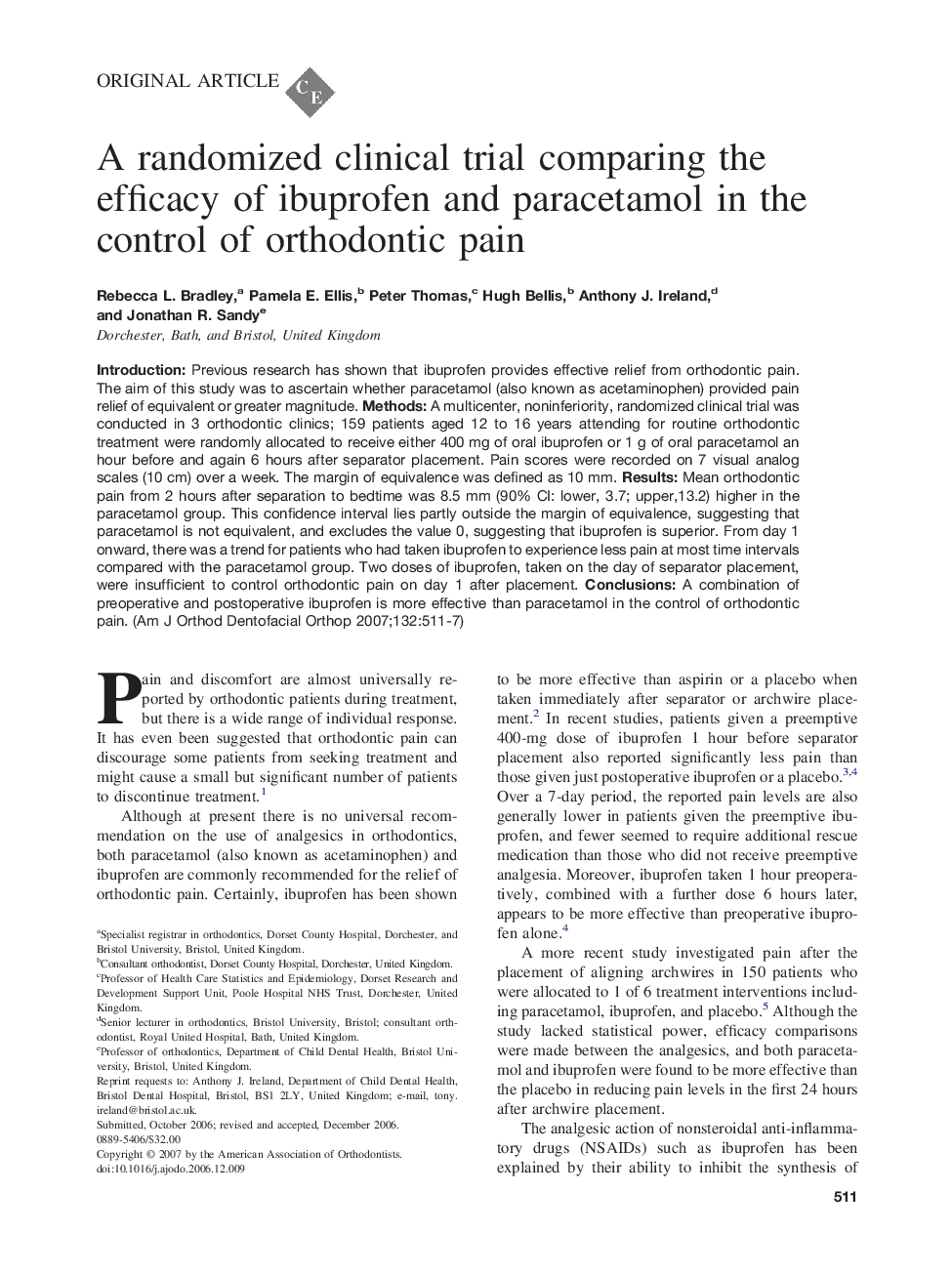| Article ID | Journal | Published Year | Pages | File Type |
|---|---|---|---|---|
| 3119802 | American Journal of Orthodontics and Dentofacial Orthopedics | 2007 | 7 Pages |
Introduction: Previous research has shown that ibuprofen provides effective relief from orthodontic pain. The aim of this study was to ascertain whether paracetamol (also known as acetaminophen) provided pain relief of equivalent or greater magnitude. Methods: A multicenter, noninferiority, randomized clinical trial was conducted in 3 orthodontic clinics; 159 patients aged 12 to 16 years attending for routine orthodontic treatment were randomly allocated to receive either 400 mg of oral ibuprofen or 1 g of oral paracetamol an hour before and again 6 hours after separator placement. Pain scores were recorded on 7 visual analog scales (10 cm) over a week. The margin of equivalence was defined as 10 mm. Results: Mean orthodontic pain from 2 hours after separation to bedtime was 8.5 mm (90% CI: lower, 3.7; upper,13.2) higher in the paracetamol group. This confidence interval lies partly outside the margin of equivalence, suggesting that paracetamol is not equivalent, and excludes the value 0, suggesting that ibuprofen is superior. From day 1 onward, there was a trend for patients who had taken ibuprofen to experience less pain at most time intervals compared with the paracetamol group. Two doses of ibuprofen, taken on the day of separator placement, were insufficient to control orthodontic pain on day 1 after placement. Conclusions: A combination of preoperative and postoperative ibuprofen is more effective than paracetamol in the control of orthodontic pain.
